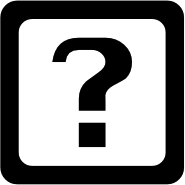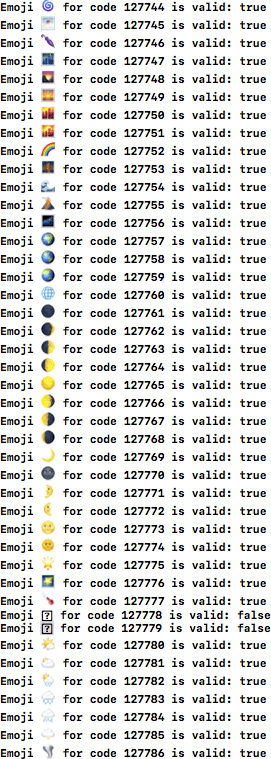Q:
Is an Emoji (or Unicode Character) available on a given device?
A:
Maybe. ← Compare against this character! 
This article goes into details on how to compare the emoji or Unicode rendition against a known, invalid image.
This approach is very similar to the algorithm I implemented back in 1993, which was the object of a patent application.
It is also the response proposed to Stack Overflow question #41318999, «Is there a way to know if an Emoji is supported in iOS?»
-
 SO-41318999
SO-41318999 -
 SO-9352753
SO-9352753 -
 SO-31363211
SO-31363211
Method: Compare character images
- Convert the character into a Portable Network Graphic image, lossless
- Extract the png data
- Compare the data against a known invalid image
- If there is a match, then the character is invalid
This approach leverages on the fact that the OS uses the same default character for unknown unicode character.
Step 1: character to png
func png(ofSize fontSize: CGFloat) -> Data? {
let attributes = [NSAttributedStringKey.font:
UIFont.systemFont(ofSize: fontSize)]
let charStr = "\(self)" as NSString
let size = charStr.size(withAttributes: attributes)
UIGraphicsBeginImageContext(size)
charStr.draw(at: CGPoint(x: 0,y :0), withAttributes: attributes)
var png:Data? = nil
if let charImage = UIGraphicsGetImageFromCurrentImageContext() {
png = UIImagePNGRepresentation(charImage)
}
UIGraphicsEndImageContext()
return png
}
Step 2: Compare against a known invalid character
func unicodeAvailable() -> Bool {
if let refUnicodePng = Character.refUnicodePng,
let myPng = self.png(ofSize: Character.refUnicodeSize) {
return refUnicodePng != myPng
}
return false
}
► Find the complete project on GitHub (Swift + Xcode) and run your own Unit Tests to experiment.
